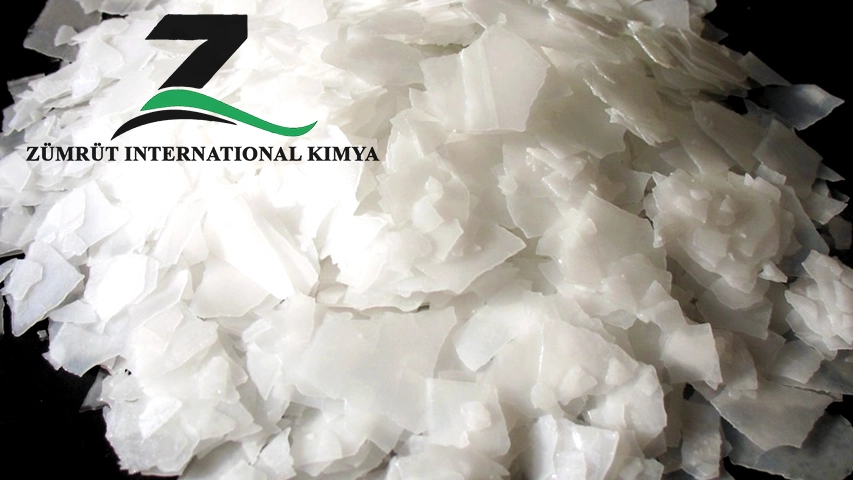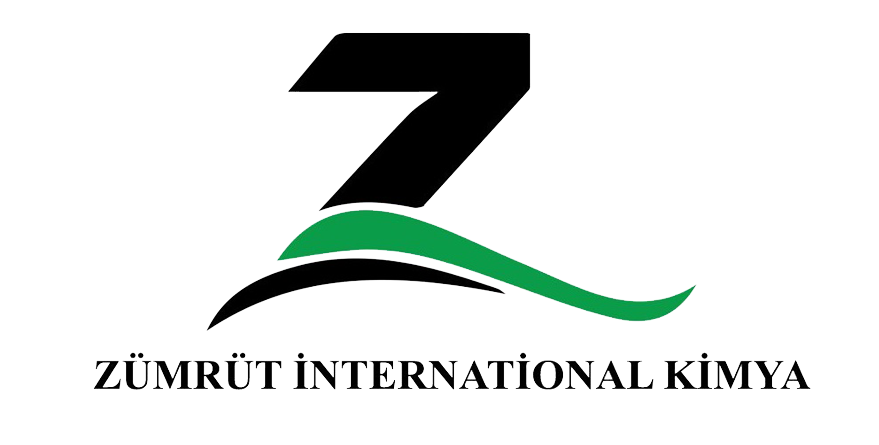Supplier of High-Quality Caustic Soda Flakes from Dubai-UAE

What Are Caustic Soda Flakes?
As a trusted Caustic Soda Flakes Supplier, ZÜMRÜT International Kimya Co. delivers high-quality sodium hydroxide (NaOH), commonly known as lye, to industries worldwide. These white, odorless crystalline flakes are highly alkaline (pH 12–14) and essential for chemical manufacturing, food processing, water treatment, and numerous industrial applications. With strict quality control and international logistics, ZÜMRÜT ensures consistent supply and premium-grade NaOH to meet diverse industrial requirements.
Key Characteristics of Caustic Soda Flakes
-
White, flat, odorless crystalline form
-
Highly soluble in water, releasing heat upon dissolution
-
Reacts with acids, metals, and moisture
-
Requires airtight storage to avoid clumping or degradation
These properties make caustic soda flakes indispensable for industries that demand high-performance chemical solutions.
How Caustic Soda Flakes Are Produced
ZÜMRÜT International Kimya Co., a premier Caustic Soda Flakes Supplier, follows the advanced chlor-alkali process to ensure maximum purity and quality:
-
Electrolysis – Brine solution undergoes electrolysis to produce sodium hydroxide, chlorine, and hydrogen.
-
Purification – Impurities are removed to achieve the desired purity level.
-
Crystallization – The solution is cooled to form solid NaOH flakes.
-
Moisture-Proof Packaging – Ensures safe handling and global delivery.
This process meets global standards for industrial, food, and pharmaceutical-grade applications.
Grades of Caustic Soda Flakes
As a leading NaOH supplier, ZÜMRÜT offers multiple grades for different industries:
-
Technical Grade (96–98% Purity): Ideal for textiles, paper bleaching, and metal cleaning.
-
Industrial Grade (98–99% Purity): Widely used in petroleum refining and pH adjustment.
-
Food Grade (≥99% Purity): Approved for fruit peeling, cocoa processing, and food applications.
-
Pharmaceutical Grade (≥99.5% Purity): For drug formulation, healthcare, and cosmetics.
-
Reagent Grade (≥99.5% Purity): Designed for analytical chemistry and laboratory use.
Top Industrial Applications
Caustic soda flakes are vital to various industries:
-
Soap & Detergent Manufacturing
-
Oil Refining & Petrochemicals
-
Water Treatment & pH Regulation
-
Textiles & Cotton Processing
-
Paper & Pulp Industry
-
Food Processing & Cocoa Treatment
-
Biodiesel Production & Renewable Fuels
-
Aluminum Extraction & Metallurgy
-
Pharmaceuticals & Healthcare Formulations
Why ZÜMRÜT Is a Leading Caustic Soda Flakes Supplier
Choosing ZÜMRÜT International Kimya Co. provides significant benefits:
-
ISO-Certified Quality – High-purity NaOH across multiple grades.
-
Global Reach – Reliable supply from Turkey, UAE, and Dubai to markets worldwide.
-
Flexible Packaging – 25 kg bags, jumbo bags for secure transport.
-
Cost-Efficient Solutions – Competitive pricing and bulk order support.
-
Sustainability Commitment – Membrane cell technology for reduced environmental impact.
Safety Guidelines for Handling NaOH
Proper handling ensures safety and efficiency:
-
Wear nitrile gloves, goggles, and acid-resistant aprons.
-
Store in dry, well-ventilated areas in polyethylene-lined containers.
-
Neutralize spills with vinegar or citric acid (avoid direct water contact).
-
Rinse immediately with water for 15 minutes in case of skin contact.
Packaging Options by ZÜMRÜT
-
25 kg Polyethylene Bags – For small-scale industries.
-
Jumbo Bags (500–1,000 kg) – UV-protected for bulk orders.
Environmental Responsibility
ZÜMRÜT minimizes carbon footprint by adopting sustainable production methods and ensuring eco-friendly chemical supply practices, contributing to circular economy standards.
FAQs – Caustic Soda Flakes Supplier
Yes, ZÜMRÜT International Kimya Co. has a strong global logistics network, delivering caustic soda flakes safely and efficiently to customers worldwide.
While caustic soda production is energy-intensive, responsible suppliers like ZÜMRÜT use sustainable membrane cell electrolysis to minimize environmental impact. Proper neutralization of waste prevents harm to soil and water.
ZÜMRÜT International Kimya Co. provides:
-
ISO-certified, high-purity caustic soda flakes.
-
Multiple grades to meet industrial, food, and pharmaceutical standards.
-
Customized packaging and reliable global shipping.
-
Expert technical support and guidance.
-
Technical Grade (96–98%): Suitable for textiles, paper bleaching, and metal cleaning.
-
Food Grade (≥99%): Safe for food processing like fruit peeling and cocoa production.
-
Pharmaceutical Grade (≥99.5%): Meets stringent purity standards for drug formulation and cosmetics.
Caustic soda flakes are produced through the chlor-alkali process, which involves the electrolysis of saltwater (brine) to create sodium hydroxide, chlorine, and hydrogen. The sodium hydroxide solution is then purified, crystallized into flakes, and packaged for delivery.
Caustic soda flakes are widely used in soap and detergent manufacturing, water treatment, oil refining, textiles, paper production, food processing, pharmaceuticals, and aluminum extraction. Their high alkalinity makes them essential in cleaning, pH adjustment, and chemical synthesis.
Contact ZÜMRÜT International Kimya Co.
📞 Phone/WhatsApp: +971 50 720 9246
📧 Email: info@causticsodaco.com
🌐 Website: www.causticsodaco.com
Specification of Caustic Soda
| CONTENT | TEST RESULT | UNIT |
|---|---|---|
| Al2O3 | Max 3 | PPM |
| Fe | 10 | PPM |
| Heavy Metals as Pb | Max 2 | PPM |
| Insoluble in Water | 0 | %W |
| Na2CO3 | 0.43 | %W |
| Na2SO4 | 0.0047 | %W |
| NaCl | 0.0085 | %W |
| NaOH | 98%±1 | %W |
| SiO2 | 0.0019 | %W |
| SHAPE | 0.3-1 | CM³ |

